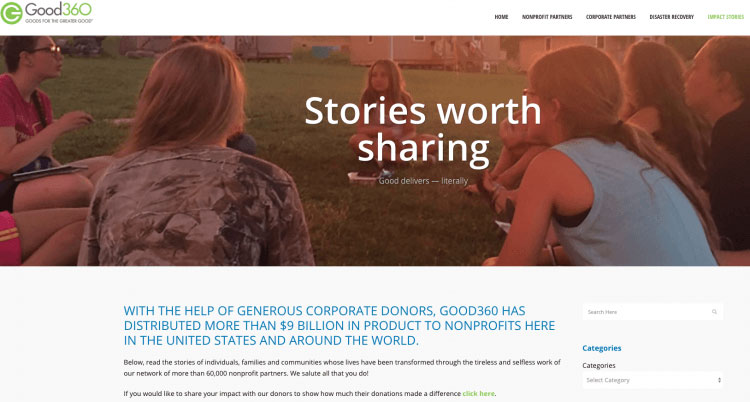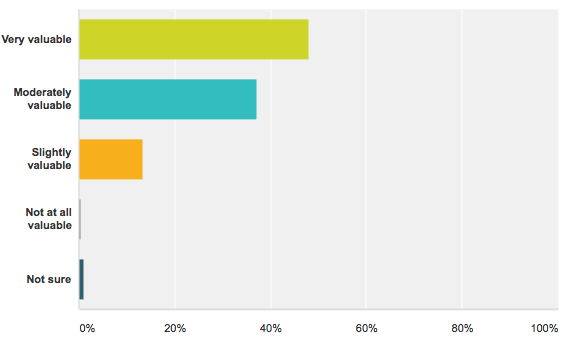4 Steps to Kickstart Your Nonprofit Engagement Strategy

Request a Demo
Learn how top nonprofits use Classy to power their fundraising.
For nonprofits, engagement can mean volunteer participation, donations, or advocacy work. To engage the right audience for any of these types of activities, nonprofits should come up with an effective strategy that considers their interests and organizational resources.
However, with so many different things to measure and learn about your audience, it can be challenging to understand what steps to prioritize to get started. Below, we recommend four things to consider that can help build audience engagement and ultimately, support.
Step 1: Determine Your Target Audience
The first step to build an effective engagement strategy is to identify your ideal supporters. Some nonprofits make the common mistake of thinking “everyone” is their target audience. In this case, by speaking to everyone, you risk speaking to no one because your message is not tailored to any characteristics.
A better strategy is to develop audience personas, which are similar to buyer personas used by for-profit companies. An audience persona is a representation of an ideal supporter based on a combination of personal information, including interests, demographics, location, and aspirations.
Collect as much of the following information as possible to create audience personas, like:
- Location
- Gender
- Level of education
- Income
- Marital status
- Values and beliefs
- Passions and interests
- Dreams and goals
- Political views
- Personality characteristics
- Motivations
- Day-to-day worries and goals
Nonprofits collect this data to create effective audience personas using various methods, including email surveys, social media surveys, and interviews. For example, you could disseminate a survey in your organization’s newsletter that asks questions like:
- How often they visit your site
- What they love about your site
- What changes they’d like to see
- The size of the organization they work with
- Their specific role
Or you can create a post on social media where you ask your audience to answer similar questions.You can use social media polling tools such as Facebook’s polling in groups or insert the link to the survey’s page on your website.
Face-to-face interviews are also a great way to get meaningful information. If you have an opportunity to sit down with an audience member to talk with them, take it. Aside from your persona research, this can help build lasting relationships with your audience.
Read Next: How to Create Donor Personas
Step 2: Create a Content Strategy
For nonprofits, a clearly defined content strategy can focus your organization around the goal of developing relationships with a community of supporters. Often, the heart of an engagement strategy is storytelling. Share information in a way that creates meaningful engagement by allowing readers to connect with your beneficiaries (or main characters) on a personal level.
For example, the nonprofit Good360 has an entire section on their website dedicated to stories of individual beneficiaries they serve.

A section like this could be a great addition to your content strategy because it shows the real effort and success of your organization. In addition, content like success stories can encourage people to reach out and learn more about your organization, which can increase website traffic and take your audience engagement effort to a whole new level.
Use these steps to help define your own content strategy:
- Examine what types posts have performed well in the past
- Write about your beneficiaries, volunteers, industry research, organizational achievements, and volunteer opportunities
- Create a content calendar that will help you plan and schedule posts on the website and social media
Step 3: Optimize Your Website
Your website is one of the most important touchpoints with your audience. In that light, you should consider allocating a portion of your time toward optimizing your site so that it provides supporters with information, insight, volunteer opportunities, and donation management options.
Here’s how you can improve your engagement strategy through your organization’s website:
- Update your contact database frequently
- Offer opportunities to sign up for regular communications, such as specific types of newsletters
- Provide a secure online payment system to accept donations
- Position calls to action clearly
- Ensure your website is mobile-friendly
- Provide social media share buttons
By doing so, you’ll get more opportunities to engage supporters in specific projects and ultimately build a large community of followers. Moreover, using design techniques such as online payment systems, mobile friendliness, and social media buttons can increase the effectiveness of this effort by making it easier for supporters to connect with you.
Read Next: 3 Ways to Boost Donor Engagement With Email
Social media is another critical touchpoint in your engagement strategy. Today, many nonprofits gain new supporters and raise awareness through social media networks like Facebook and Twitter. Check out some of these usage statistics for popular social networks in 2018 (monthly active users):
Further, 98 percent of nonprofit organizations have pages on Facebook, according to HubSpot . Also, 48 percent of all nonprofits believe that social media is “very valuable” to their strategy.

The importance of social media as a tool to meet potential supporters, secure donations, and raise awareness should not be underestimated. Here are initial steps to consider as you develop your specific engagement strategy:
- Identify the types of content you create best suited to engage your social communities (for example, these could be infographics with data or videos showing your activities)
- Consider the most appropriate social media channels for your specific audience (for example, Facebook is great for all nonprofits audiences but LinkedIn is used typically by and for professionals and organizations)
- Follow similar organizations with whom you can connect and learn from
- Be active—respond to comments and participate in two-way conversations. This shows your commitment to share your knowledge and exchange ideas for helping others.
Remember to give thanks along the way to everyone who contributes to your mission. It’ll improve their motivation and commitment.
Putting It All Together
An effective engagement strategy for a nonprofit can enhance volunteer participation, increase donations, and promote advocacy work. To ensure that your strategy is effective, you can use these four tactics to help boost audience engagement.
You can also increase the intention behind your efforts and strategically grow your nonprofit. To track your results and determine how you perform in terms of building engagement with your audience, use tools like Google Analytics. It’s great for supplying information such as the number of donations that resulted from your activities.

9 Email Templates for Nonprofit Annual Communication Plan
Subscribe to the Classy Blog
Get the latest fundraising tips, trends, and ideas in your inbox.
Thank you for subscribing
You signed up for emails from Classy
Request a Demo
Learn how top nonprofits use Classy to power their fundraising.
 Explore Classy.org
Explore Classy.org 

